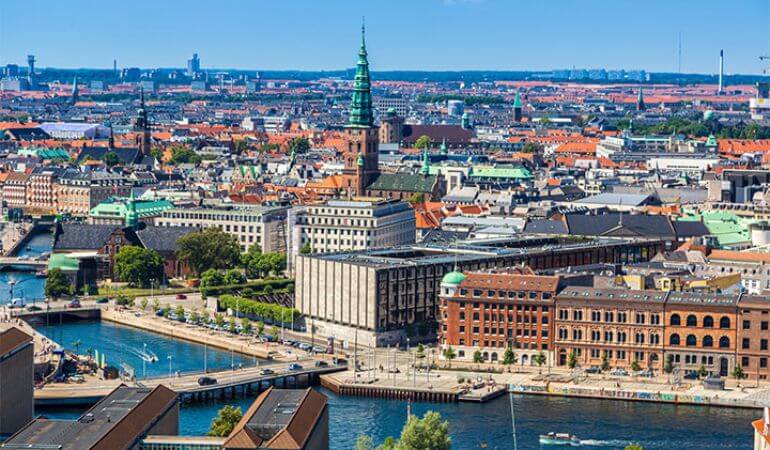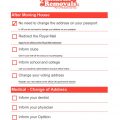
Capital City: Copenhagen
Population: 5.903 million (2022)
Official language: Danish
Commonly spoken languages: Danish, Faroese, Greenlandic, German, English
Currency: Danish krone
Are you thinking about moving to Denmark from the UK? Get ready for an amazing experience. With its stunning shoreline, quaint towns, vibrant cities, and welcoming locals, the Scandinavian country has plenty to offer to both tourists and new residents.
So, if you’re planning to relocate to Denmark but feeling overwhelmed about where to begin, look no further – this article is tailored for you. In this blog post, we’ll cover everything you need to know about moving to Denmark and provide vital information for your residency.
Table of Contents
Can a UK citizen move to Denmark?
Since the UK exited from the EU, visiting a European country for more than 90 days requires a visa. As a result, British citizens who plan on moving to Denmark must apply for a residence permit. However, based on the nature of relocation to Denmark, there are multiple routes to obtain a residence permit.
Where to live in Denmark?
Choosing where in Denmark to live is challenging as the country has some very beautiful cities. Areas with the most British residents in Denmark are Copenhagen and Aarhus.
Copenhagen
Denmark’s capital is the most populous city. With amazing coastal views, as it sits on the shores of the islands of Zealand and Amager, many palaces, one of which is the famous royal family’s Amalienborg Palace, Copenhagen offers a unique independent culture and busy lifestyle.
You’ll also find large green parks for your daily stroll. One of the top attractions for foreigners is Andersen’s little mermaid statue – forever on a rock by the waterside at the Langelinie promenade, waiting to be admired.
Aarhus
Aarhus is the second-largest city in Denmark, located on the east coast of the Jutland peninsula. It’s home to some of the country’s most impressive modern buildings and architectural landmarks. With its many museums and art galleries, the new library in modern minimalist design and the largest concert hall with its marvellous glass facade, this city will keep you busy day and night.
Amazing music festivals, delicious Nordic cuisine, pristine beaches and vibrant nightlife are definitely worth the move to Denmark.
How to become a Danish resident
Because of Brexit, British citizens planning on moving to Denmark from the UK are required to have a visa in the form of a work or residency permit. It is recommended that you check out the requirements on the Internet and then submit your application to the Danish Embassy in the UK prior to your relocation.
If you are an EU citizen, you can move to Denmark without a work permit or a residency permit, but you must apply for an EU residence document. As soon as you arrive, you will be able to apply for this.
Working in Denmark
The economic situation in Denmark is generally stable, with an average annual salary of approximately €49,850. Some of the highest-paid job positions in the country include doctors/surgeons, lawyers, judges, bank managers, orthodontists, and college professors. Currently, there is a high demand for medical consultants, hospital doctors, builders, engineers, dentists, and pharmacists.
When working in Denmark, you will need a personal tax number and a tax card. These can be obtained from the Danish Customs and Tax Administration website. If you plan to stay or work in Denmark for an extended period, you will also need a CRP (civil registration number). EU citizens must obtain this after six months, while others must do so after three months.
To receive your salary or other payments, you will need to open a Danish bank account or register your UK account in NemKonto (Easy Account).
Your key to digital Denmark is NemID – a single login for Danish banks and government websites. This can be obtained from your local Citizen Service centre with your ID card or passport. When you start working in Denmark, you will need to register your income and confirm your type of tax liability.
Transportation in Denmark
Most people in Denmark travel by plane, road or railway. Some areas of the country are accessible only by sea, and ferries transport travellers to many Danish islands.
Public transport or bicycles are the most common means of transportation within the city limits. With the DOT tickets app or the city’s website, you can easily plan and pay for public transportation in Copenhagen.
All means of transportation in the capital are accessible by a single ticket purchase or the Copenhagen card for 24, 48, 72 or 120 hours. There are also available bikes and scooters for hire in all major cities in Denmark.
Is UK driving license valid in Denmark?
Since January 1, 2023, UK residents must have a Danish or European driving license to drive legally in the country. If you moved to Denmark after December 31, 2020, and have a British driver’s license, you’re allowed to use it for 180 days from the date of your relocation. After 180 days, if you wish to keep driving in Denmark, you need to exchange your British license for a Danish one.
By law, all vehicles must also have liability insurance before being driven to cover any damage that may be caused to other people or their property.
The only documents that can be requested of you while driving in Denmark are your driver’s license, your passport and your car’s insurance and registration. You must be at least 18 years old to drive, and if you are looking to rent a car, you must be at least 21 years old.
Emigrating to Denmark from the UK will also inevitably lead to driving on the right side of the road. More information on parking regulations, stopping and parking your vehicle can be found on the official Danish website for international visitors and residents.
Education in Denmark
Most of the young children in Denmark attend state-run nurseries from the age of six months to 6 years if needed, as nannies are not popular among Danish families.
School starts at the age of 6, and 10 years of education is compulsory.
This can be received in the public or private sector, but children can also be home-schooled, given they meet the accepted standards. Class sizes are generally smaller, and children are well tended to, not solely focusing on their performance but rather on their emotional state and social skills.
Being a student in Denmark
Education in Denmark is free for EU and Danish students, and there are also a variety of grants and scholarships to help with any student fees. On average, a student needs about €1000 a month, varying depending on their habits and lifestyle.
Denmark is a top destination for international students. It is often regarded as offering some of the best public services in the world.
According to The Academic Ranking of World Universities and Times Higher Education World University Rankings, seven of the top-ranked universities are located right here.
The best university in Denmark has been the University of Copenhagen for many years in a row. Still, students across the country enjoy high-quality education. Some programs in Denmark even offer self-scheduling options.
Moving abroad any time soon? We can help make your relocation easier!
Enter your postcode to view our rates and availability in your area.
For questions about the services we offer visit our main site or you can always call us at 020 3746 0584
Healthcare in Denmark
Denmark is known for its significant efforts in developing and bettering its e-health system. The digitalization of Danish healthcare allows every citizen and every doctor to access their personal Electronic Health Records. The Danish healthcare-IT strategy also helps elderly people stay healthy in the comfort of their own homes and ensures an increase in their quality of life.
Registered Danish residents are all automatically enrolled in health care, which is mostly free to use as it is publicly financed. Hospital and emergency care are also free of charge.
According to EU regulations, people from the EU are covered by health care insurance. If you don’t have a European Health Insurance Card or a certificate that temporarily replaces this card, you will have to pay for non-urgent health care yourself. You may seek reimbursement afterwards. The price of such a visit will, of course, vary compared to the UK, but you can find thorough information in our article on the costs of living in Denmark.
To access any medical treatment, you will need to present a yellow health card, which shows your name, address, CPR number, and the name and address of your doctor. This card will give you access to free medical care in Denmark, Greenland and the Faroe Islands. It is sent to you after your registration for CPR.
A visit to your GP is firstly required to assess your condition and is best booked in advance. After that, you may be forwarded to a specialist with a doctor’s note.
Takeaways
Should you consider moving to Denmark from the UK, Fantastic Removals is here to assist and ensure your move is as seamless as possible! We know that international relocation can seem overwhelming, but our removal company will handle all the details so you can enjoy a stress-free experience.
We will take care of your moving to Denmark, allowing you to concentrate on building your new life in this charming Scandinavian country.














